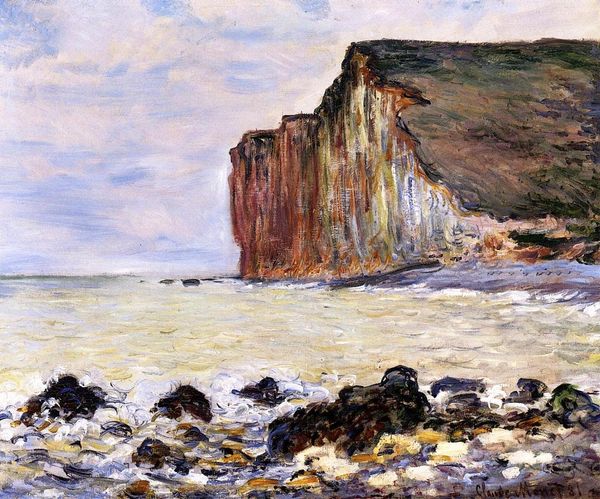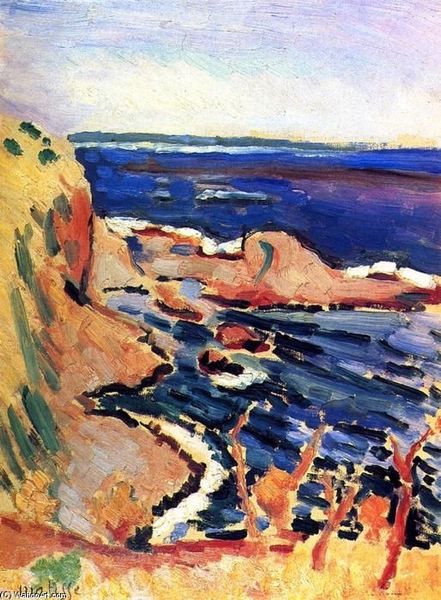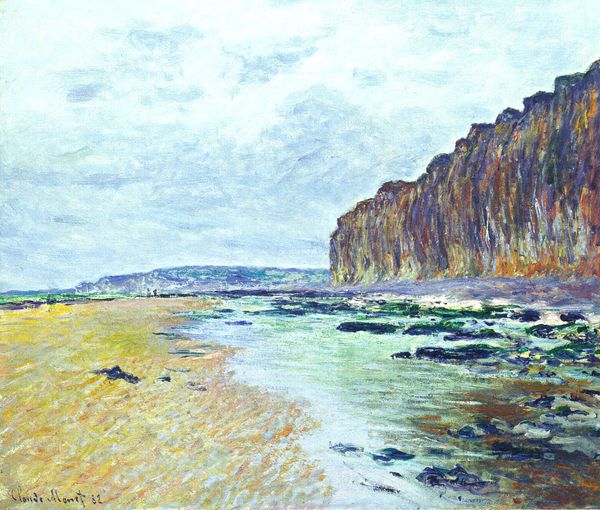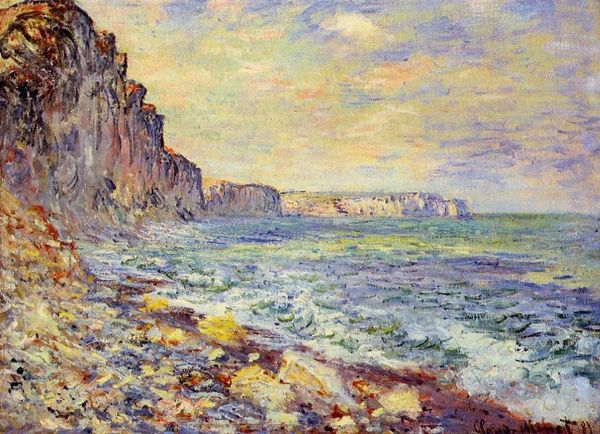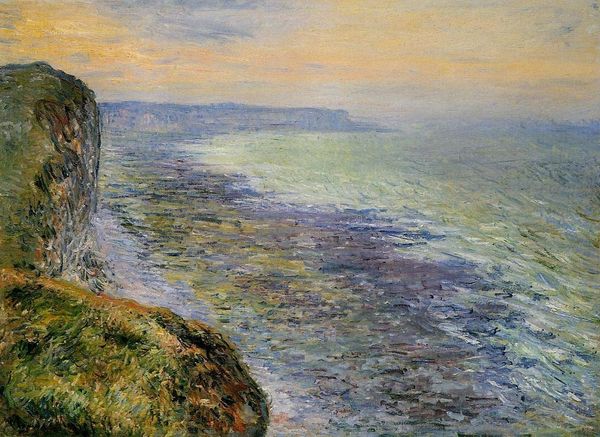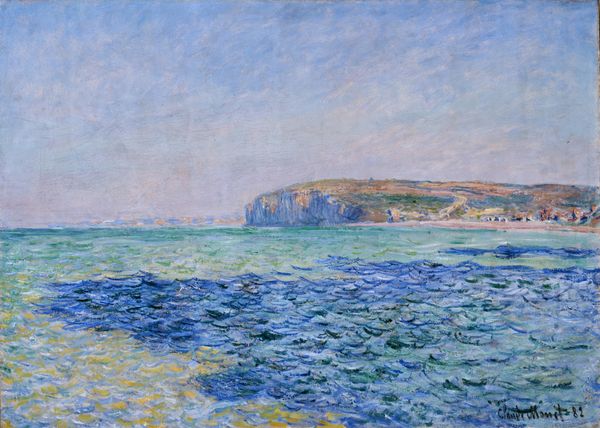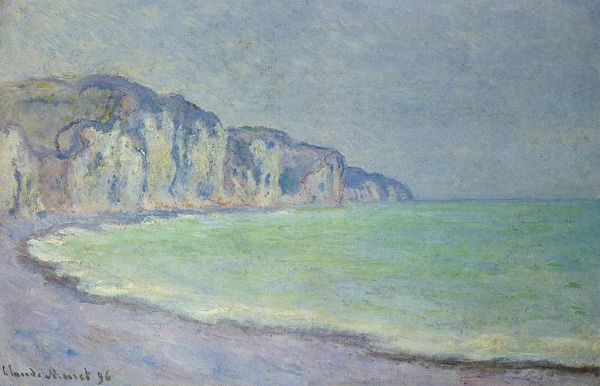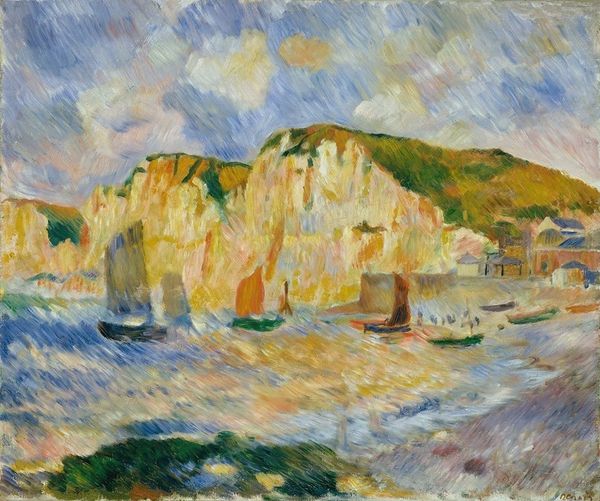
Copyright: Public domain
Editor: So, this is Claude Monet’s "Beach and Cliffs at Pourville, Morning Effect," painted in 1882, using oil on canvas. It's striking how the cliffs seem to glow, but the foreground is all rocky and textured. How do you interpret this landscape, Professor? Curator: It's interesting you highlight that contrast. Consider the rise of leisure and tourism in late 19th-century France. Paintings like this catered to a burgeoning middle class eager for images of picturesque locales. How does the composition, with its emphasis on natural beauty, reflect or perhaps even shape this societal trend? Editor: I hadn't thought of it as part of the tourism boom. I was focused on how Impressionism broke from earlier landscape traditions. The cliffs don't look 'real' to me, they appear as feelings, through colour. Curator: Absolutely, and Monet was definitely part of breaking conventions. But let's think about it: weren't these 'feeling-based' images, capturing light and atmosphere, precisely what wealthy Parisians wanted as souvenirs of their travels, experiences mediated through a lens of artistic taste, as well as changing public role for painting, like picture postcards? Editor: Oh, I see what you mean. So it’s about marketing a kind of experience through art? Curator: Precisely. Think about the institutions displaying and selling works like these: how did the market and the critics influence what was considered ‘good’ or ‘important’ art, and whose interests did that serve? It is less a 'real' depiction of a landscape, but an impression thereof. What did Impressionism enable within society through imagery? Editor: Wow, it makes me look at this serene scene very differently, from how art is made, to consumed and understood by public opinion. Thank you! Curator: Glad to have shifted your perspective. It's vital to consider those larger frameworks when analyzing any artwork.
Comments
No comments
Be the first to comment and join the conversation on the ultimate creative platform.
